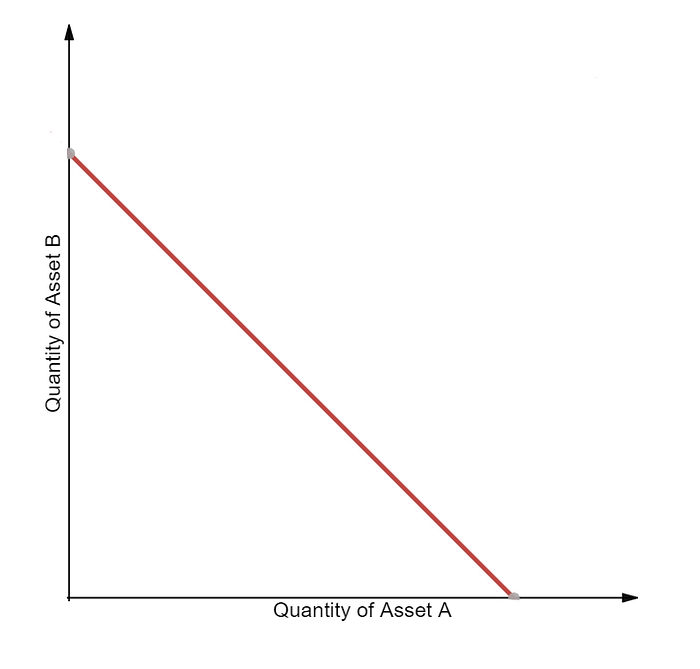Constant Sum
A constant sum pricing model is a straightforward implementation satisfies the equation:

Where R_i are the reserves of each asset and k is a constant. While this function produces “zero slippage”, it does not provide infinite liquidity and thus is likely unfit as a standalone implementation for a decentralized exchange use-case. In practice, what would happen is that any arbitrageur would always drain one of the reserves if the reference relative price of the reserve tokens is not one.

A constant sum function forms a straight line when plotting two assets.
Last updated